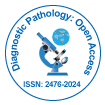Nanotechnology in the Development of COVID-19 Vaccine
Received: 05-Jan-2021 / Accepted Date: 19-Jan-2021 / Published Date: 26-Jan-2021 DOI: 10.4172/2476-2024.1000e107
Keywords: Nanotechnology; COVID-19; Vaccine
Editorial Note
“The next big thing is really small!”
Nanotechnology is an evolving science that is expected to advance popular and widespread in the future. It enhances current production methods, materials and implementations by scaling them down in order to eventually completely leverage the unique quantum and surface dynamics that matter exhibits at the nanoscale.
Nanomedicine draws on the natural scale of biological phenomena to develop specific approaches for the prevention, diagnosis and treatment of diseases. It plays a major role in vaccine development as it is suitable for delivering antigens, acting as adjuvant platforms, and emulating viral structures. For the first time, emerging innovations and techniques are expected to have a therapeutic influence from a vaccine technology growth point of view. Next-generation vaccines that have been facilitated by developments in nanotechnology are classified into the following.
Peptide-based Vaccines
Peptide-based vaccines can be formulated by an effective nanocarrier encoded by nucleic acid vaccine formulations as peptides plus adjuvant mixtures. These are the simplest type of easily developed, validated, and efficiently produced vaccines i.e., 10 million doses of influenza vaccine within one month to demonstrate the speed and scalability.
Viruses like particles are an interesting nanotechnology category for peptide vaccines due to their ability to mimic the molecular patterns associated with pathogens that serve not only as the delivery platform but also as adjuvant. Various B- and T-cell epitopes of the SARS-CoV-2 S protein have been identified using a combination of informatics and immunological analysis of antibodies and patient plasma.
Nucleic-acid based Vaccines
These are developed to deliver the genetic code for the in situ development of viral proteins as a promising alternative to traditional vaccine methods. This category includes both DNA and mRNA vaccines and is being investigated in the perspective of the COVID-19 pandemic. A variety of COVID-19 vaccines are being produced using DNA or RNA. Though DNA vaccines are more stable than mRNA vaccines, the mRNA is not incorporated and therefore does not pose a risk of insertional mutagenesis.
Subunit Vaccines
Subunit vaccines use only limited pathogenic virus structural elements such as virus proteins or assembled Virus Like Particles (VLPs) to provide primary protective immunity. These VLPs mimics the infectious virus's immunogenic topological characteristics due to the absence of genetic material and possess some or all of the pathogen's structural proteins.
Diagnostic Pathology has released a Special Issue on “Therapeutic Applications in COVID-19” to introduce the latest research findings regarding SARS-CoV-2 emphasizing on successful, strategies, proactive response mechanisms and interventions. The Special Issue contains an Editorial, two Review article and a Case report.
Mascellino in her Editorial on the role of Spike Protein in COVID- 19, shared her expertise in the importance of the spike protein and its applications in the development vaccines and therapies [1].
Horton in his Review article on Medically assisted reproduction in the context of the COVID-19 pandemic described the safety protocol along with the literature evidence on the effect of SARS-CoV-2 on pregnancy, vertical transmission and neonatal health. His assessment on the impact of the pandemic on fertility treatment from a global perspective is appreciable [2].
Pahwa et al. in their Case report presented a rare presentation on metastatic choriocarcinoma of the Kidney concluded that gestational or primary non-gestational choriocarcinomas should always be considered as a differential diagnosis in young females of reproductive age group [3].
Alaba et al. in their Review on the role of Histopathology laboratory in post-mortem examination of COVID-19 cases provided insightful information regarding the role of the Histopathology, elaborated assessment and the challenges involved [4].
References
- Mascellino MT (2020) Role of Spike Protein in COVID-19. Diagn Pathol Open S1: e001.
- Horton M (2020) Medically Assisted Reproduction (MAR) in the Context of the COVID-19 Pandemic. Diagnos Pathol Open S1: 001.
- Pahwa S, Anila S, Meenakshi K, Gurudutt G, Sunil P (2020) Metastatic Choriocarcinoma of the Kidney in Absence of Existing PrimaryUterine Tumour: A Rare Presentation. Diagn Pathol Open S1: 002.
- Alaba OEG, Eric EU, Avwioro GO, Enitan SS, Adepoju P, et al. (2020) The Role of Histopathology Laboratory in Post-Mortem Examination of COVID-19 Cases: Challenges and Way Forward. Diagn Pathol Open S1: 003.
Citation: Brunelli M (2021) Nanotechnology in the Development of COVID-19 Vaccine. Diagnos Pathol Open 6: e107. DOI: 10.4172/2476-2024.1000e107
Copyright: © 2021 Brunelli M. This is an open-access article distributed under the terms of the Creative Commons Attribution License, which permits unrestricted use, distribution, and reproduction in any medium, provided the original author and source are credited.
Share This Article
Open Access Journals
Article Tools
Article Usage
- Total views: 1699
- [From(publication date): 0-2021 - Feb 01, 2025]
- Breakdown by view type
- HTML page views: 1099
- PDF downloads: 600
